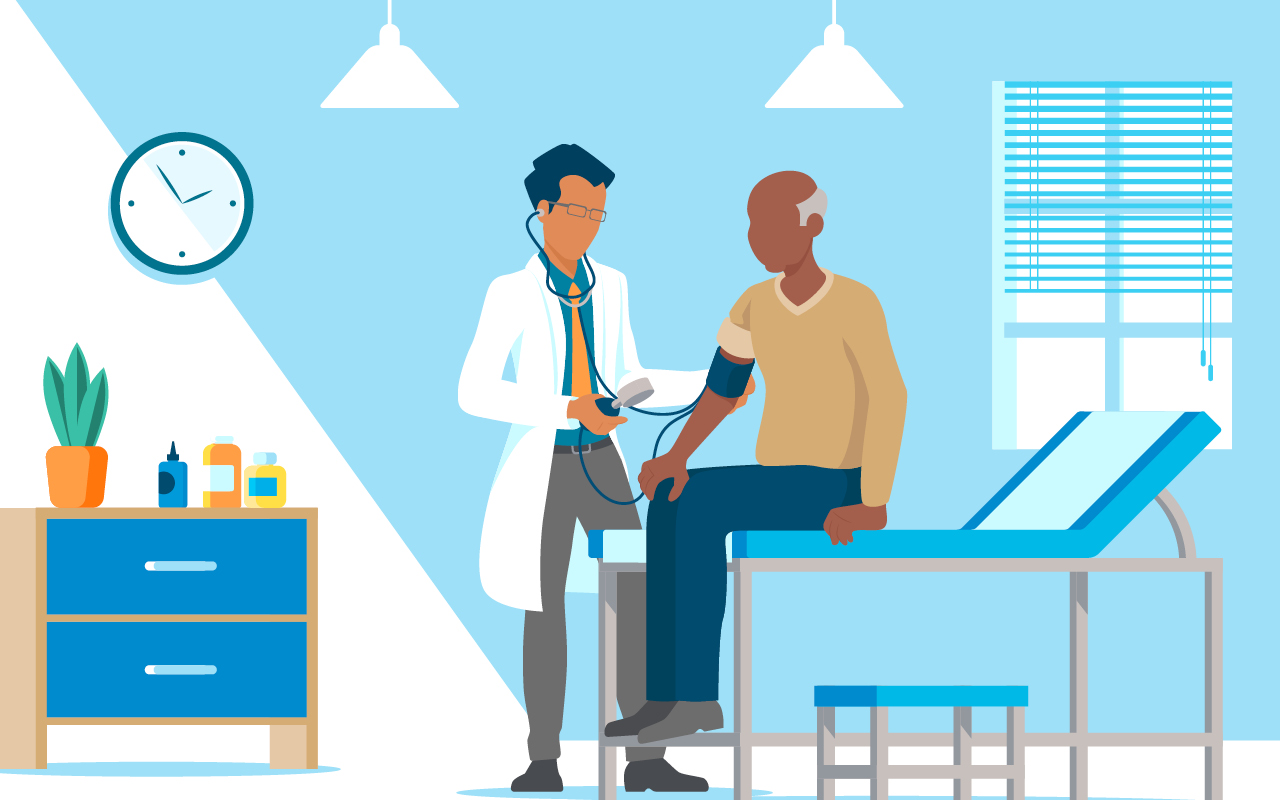Two $0 Visits to Keep You Healthy

To help you stay well, your BCBSRI Medicare Advantage plan includes a yearly checkup and an annual wellness visit. Not sure what the difference is? Let’s look at why both are important.
Your yearly checkup: Includes a physical exam
Your BCBSRI health plan covers a yearly checkup at $0 when you see a provider in your plan’s network. This checkup is like many you’ve had throughout your life. You bring any questions, and your primary care provider (PCP) gives you a physical exam and may order screening tests.
Here’s what to know:
- To get ready for your visit, make a list of your health concerns and any changes to your health.
Maybe you’ve had trouble sleeping recently. Or your allergies are acting up. Or you’ve had foot pain. Bring a list of these issues with you to your visit, putting the most important ones at the top. Be sure to also tell your PCP about any changes to your health or medications as well as any doctor visits or trips to the hospital. - This visit can help prevent problems or find them early, when they’re easier to treat.
Your PCP may do an exam that includes taking your blood pressure, temperature, and heart rate and listening to your heart and lungs with a stethoscope. They may also check your ears, nose, throat, abdomen, joints, and other parts of your body as well as ask questions to uncover anxiety, depression, or other mental health issues. Based on your age and medical history, your PCP may recommend certain tests or screenings. See below for a checklist. - You can get help with getting healthy.
Ask your PCP for advice if you aren’t getting regular exercise, need help to stop smoking, or want to make other changes. They can connect you with people who can help—either in their office, through your BCBSRI health plan, or in the community—sometimes at no cost to you.
Need help finding a PCP? Use the BCBSRI Find Care tool or call the Medicare Concierge Team.
Your annual wellness visit: A time to talk
Once you’ve had your BCBSRI Medicare Advantage plan or Medicare Part B for more than 12 months, this visit is covered at no cost every 12 months.1 Your PCP will have you answer questions for a health risk assessment and then will create a detailed plan for you.
Here’s what to know:
- The health risk assessment may ask about your medical history, medications, providers, and health risks.
Your responses help your PCP create a plan for you, which may include preventive screenings, immunizations, and resources. - Your PCP will recommend you have advance care directives.
These are health documents that let your care team know how you wish to be cared for if you’re unable to speak for yourself.
Your health to-do list
Your PCP may recommend the following screenings and tests based on your age and medical history. If you may have missed any, ask your PCP about scheduling them.
Preventive cancer screenings
Many types of cancer are “silent,” meaning you’ll have no symptoms until the disease has advanced and is harder to treat. These screenings can find diseases earlier and, in some cases, even help prevent them. When you see an in-network provider, these screenings are often $0. Here are general guidelines.
- Colon cancer screening, Everyone ages 45-75
Colorectal cancer is a type of cancer that starts in the colon or rectum. While a colonoscopy is the “gold standard” for this screening, other options are available, including simple take-home tests. Ask your PCP what they recommend. - Breast cancer screening, Women ages 40-74
The best way to find breast cancer early is with a mammogram (an X-ray of the breast).
Bone density screening, Women ages 65 and older
- This test helps screen for osteoporosis, a disease that weakens bones to the point where they break easily. You may not notice any changes until a bone breaks. Your PCP may recommend this test earlier than age 65 if you have had a recent fracture or may be at risk for one.
Care for people with diabetes
- A1C
The A1C test shows your average blood sugar over the past 2-3 months. - Eye exam
People who have diabetes are at greater risk for eye problems. In fact, diabetes is the leading cause of blindness in adults ages 20-74.2 Annual eye exams can help detect changes in your vision early and reduce the risk of vision loss.
1Your first annual wellness visit can’t take place within 12 months of your “Welcome to Medicare” preventive visit. However, you don’t need to have had a “Welcome to Medicare” visit to be covered for annual wellness visits after you’ve had Part B for 12 months.
2National Eye Institute
In order for preventive services to be covered without cost sharing, members must receive services from a network provider, and certain age, sex, and risk profile requirements may apply. Guidelines and covered preventive healthcare services may change over time. For more information, please refer to your benefit booklet or call our customer service team.